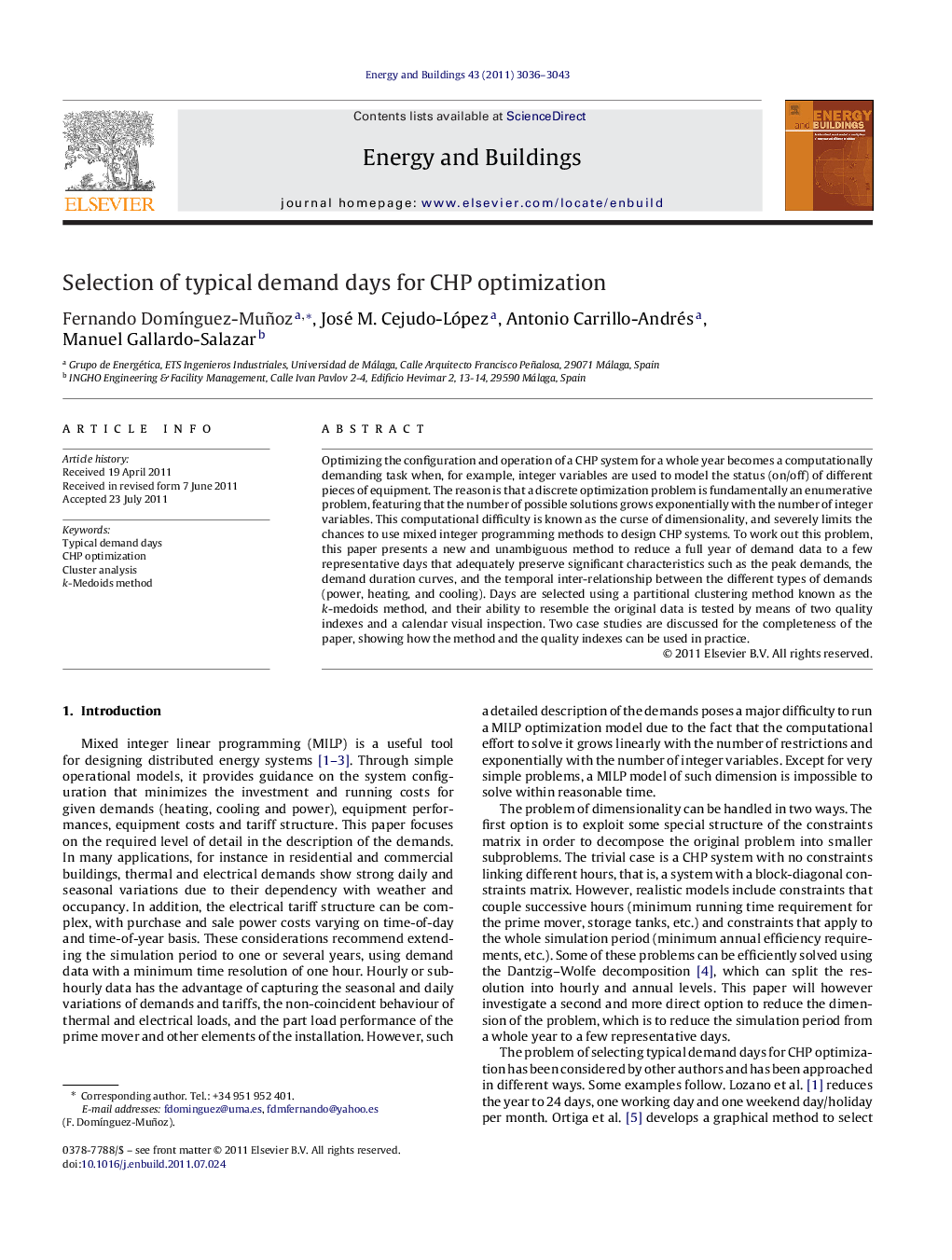| Article ID | Journal | Published Year | Pages | File Type |
|---|---|---|---|---|
| 264120 | Energy and Buildings | 2011 | 8 Pages |
Optimizing the configuration and operation of a CHP system for a whole year becomes a computationally demanding task when, for example, integer variables are used to model the status (on/off) of different pieces of equipment. The reason is that a discrete optimization problem is fundamentally an enumerative problem, featuring that the number of possible solutions grows exponentially with the number of integer variables. This computational difficulty is known as the curse of dimensionality, and severely limits the chances to use mixed integer programming methods to design CHP systems. To work out this problem, this paper presents a new and unambiguous method to reduce a full year of demand data to a few representative days that adequately preserve significant characteristics such as the peak demands, the demand duration curves, and the temporal inter-relationship between the different types of demands (power, heating, and cooling). Days are selected using a partitional clustering method known as the k-medoids method, and their ability to resemble the original data is tested by means of two quality indexes and a calendar visual inspection. Two case studies are discussed for the completeness of the paper, showing how the method and the quality indexes can be used in practice.
► We propose a method to identify daily demand patterns in annual demand distributions. ► Typical demand days are used to reduce the calculation effort in solving MILP models. ► A partitional clustering analysis technique is applied to identify the typical days. ► A set of indexes is proposed to check the quality of the selected typical days. ► Two case studies show how the proposed methodology can be used in practice.
